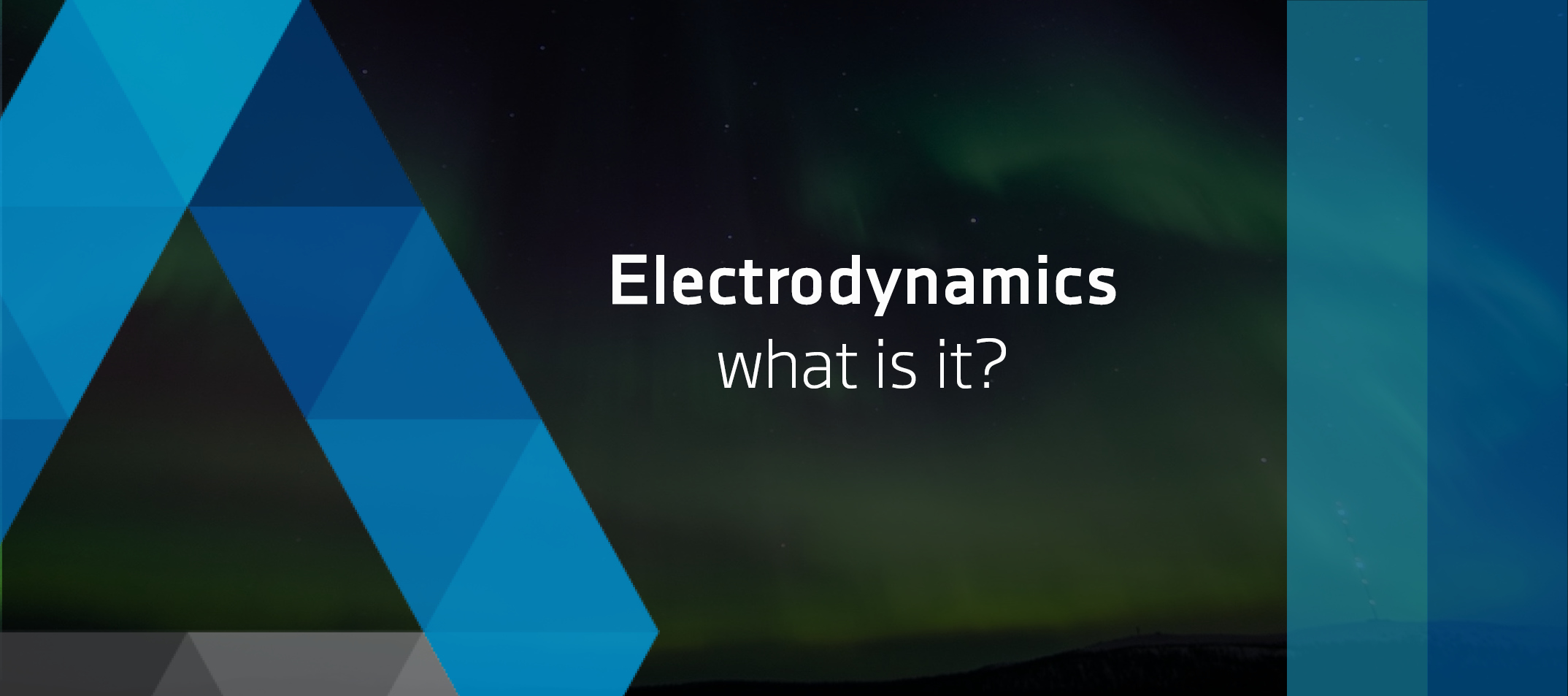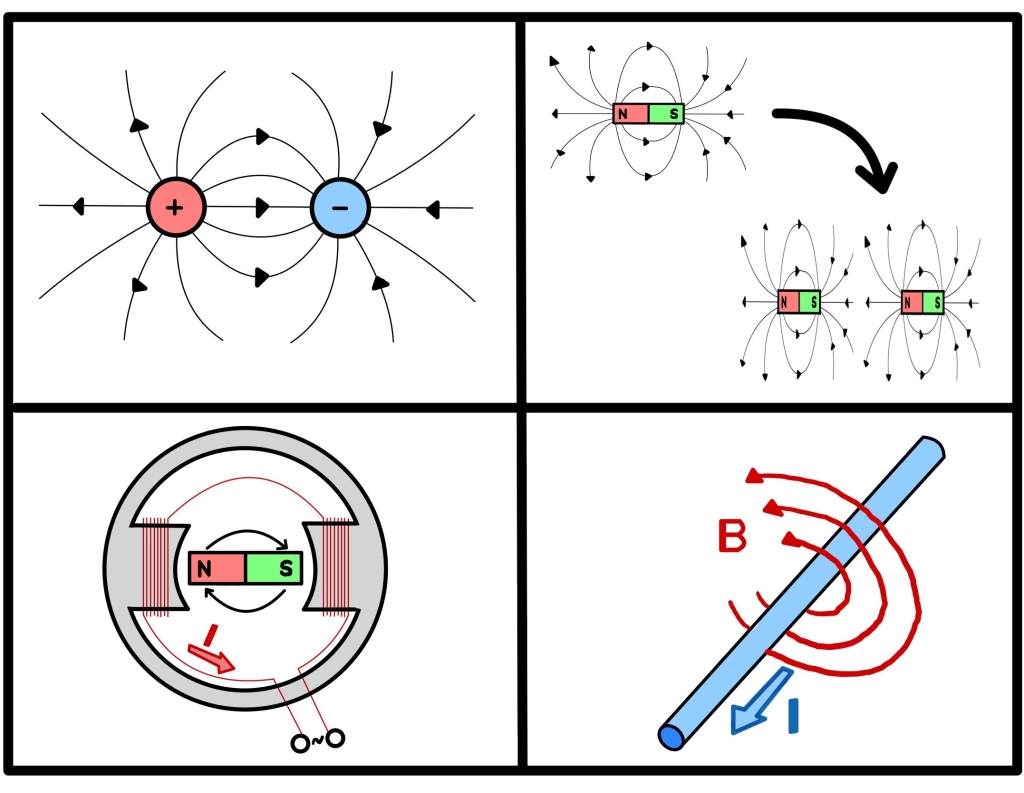Electrodynamics – the physics behind electrical engineering

Electrical engineering and electrodynamics – If these two terms sound very similar to you, this is no coincidence. Both electrical engineering and electrodynamics deal with electric charges, electric currents, voltage and much more. But what is the difference and how does a deep understanding of electrodynamics help you in practice? These are exactly the questions we want to answer in this blogpost.
Electrodynamics, what is it?
Have you ever asked yourself what an electric charge is, why magnets attract each other or what an electric field actually consists of? Unfortunately, even electrodynamics cannot give the answer to these questions. But what electrodynamics can do, is to describe the behavior of electric charges in a voltage field or the behavior in which magnets exert an attraction on each other.
Electrodynamics is one of the oldest and best studied theories in physics. It deals in a fundamental way with the motion and behavior of electrically charged particles and currents. In addition, it also describes magnetism, which (as we will see) is closely related to electricity.
As mentioned, both magnetic fields and electric voltages (caused by an electric field) play an important role in electrodynamics. This is exactly why electrodynamics belongs to the category of field theories. Almost all theories of modern physics are field theories, and electrodynamics has thus laid the foundation for modern physics.
The basic laws of electrodynamics
As in every physical theory, also in electrodynamics there are some laws. But how do you find such laws of nature? One finds these only by experiments. You have to observe nature closely and derive laws from these observations. One also calls this empiricism.
For this very reason, some of the laws of electrodynamics will seem very familiar to you. But maybe you have never perceived them so directly. Altogether there are four (in the broader sense also five) fundamental laws in electrodynamics:
- Gauss’s law: Gauss’s law states that every electric charge (e.g. an electron) generates an electric field around itself (which leads to an electric voltage). Finally, this is also the reason why opposite electrical charges (plus and minus) attract each other.
- Gauss’s law for magnetic fields: Have you ever tried to cut a magnet in half to separate the north and south poles? In fact, Gauss’s law for magnetic fields states that this does not work. Split a magnet in half and you get two magnets, both having a north and south pole. So, unlike electric charges, there are no disconnected magnetic poles.
- Law of induction: If you look at a magnet that is moving fast, for example due to a rotation around itself, you will notice the following: The magnetic field of the magnet generates a voltage in nearby conductors.
- Ampère’s law: Ampère’s law states that every electric current, also the one in power cables, generates a magnetic field.

Gauss’s law (upper left), Gauss’s law of magnetism (upper right), law of induction (lower left), Ampère’s law (lower right)
As simple as these laws may sound, they are difficult to apply. The underlying equations are difficult to solve and lead to many different phenomena. We will explain this in more detail in the next section.
The connection to electrical engineering
The multitude of phenomena arising from electrodynamics is fascinating. For example, the shape of auroras, the generation of radio waves by transceivers, or even the reflection of light from a mirror can be described (almost) exclusively with the laws mentioned above.
Another application that follows from electrodynamics is electrical engineering. For example, Gauss’ law describes how voltage is created, namely by the separation of electrical charges (e.g. in a battery or a capacitor). This ultimately leads to the flow of current in conductor cables.
On the other hand, the law of induction leads to the fact that we can efficiently generate electrical energy. In most power plants, there are turbines that cause a magnet to rotate rapidly. This rotation creates an electrical voltage due to the law of induction. Voltage transformers or some measuring devices are also based on the law of induction.
Ampère’s law also has applications in electrical engineering. For example, it can be used for non-contact measurement of AC and DC currents with current clamps. As mentioned, every current generates a magnetic field around the electrical conductor. This magnetic field can be measured and thus the electric current can be determined.
All the above-mentioned applications in electrical engineering follow from a small part of electrodynamics, namely from the quasistatic approximation. This approximation provides statements about slowly changing voltages, to which even the household alternating current with 50 Hz / 60 Hz belongs.
Leaving this quasi-static regime, you will enter the field of high-frequency technology. There, it is all about the practical use of propagating electromagnetic waves. This includes radio as well as microwave radiation.
DEWETRON – a competent partner
We are DEWETRON and a competent partner in all matters of electrical or measurement technology. No matter if you are working in high-frequency technology, the automotive industry or even aeronautics, we have the right measuring device for you.
Take for example a look at our innovative PU[REC]. PU[REC] is a mobile data recorder with an accuracy of 0.02 % and an individually selectable sampling rate up to 200 kS/s. It convinces especially with its exceptional price-performance ratio and fast delivery time.
As an alternative to our PU[REC], we also offer our all-in-one devices which can be equipped with a number of interchangeable TRION(3) modules. The TRION(3) modules offer a variety of possibilities like additional power channels, GPS synchronization or ARINC support.
On our DEWETRON website you can find all our measurement systems as well as our in-house OXYGEN DAQ software. You can also visit us on Twitter, LinkedIn or YouTube. There you will always be informed about new whitepapers, video tutorials or webinars.





